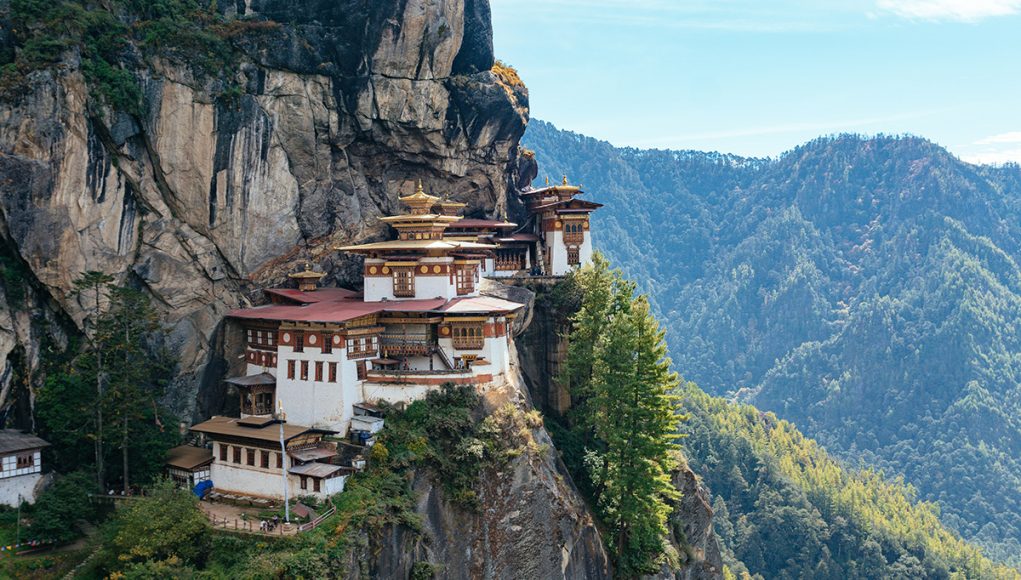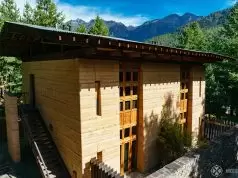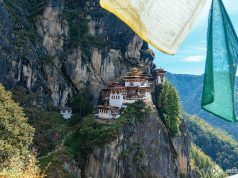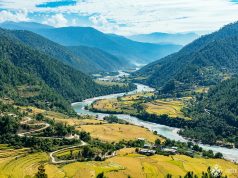Do you have the Tiger’s Nest on your bucket list? After seeing a picture of the iconic Buddhist monastery clinging to the cliff I certainly did. Quite without a doubt, the Taktsang in Paro, how the locals call it, is one of the top places to visit in Bhutan.
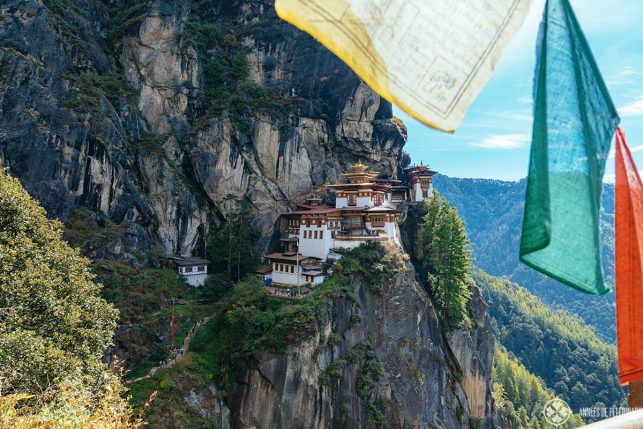
The Tiger’s Nest is, however, not all that easy to reach. In fact, it’s quite hard to get to Bhutan in the first place. It is also quite expensive, as each tourist has to spend 250 USD per day, can you believe it? Well, to make sure all that money and all those hardships are well invested, I felt like writing a detailed blog post about my experience on the Tiger’s Nest hike for you.
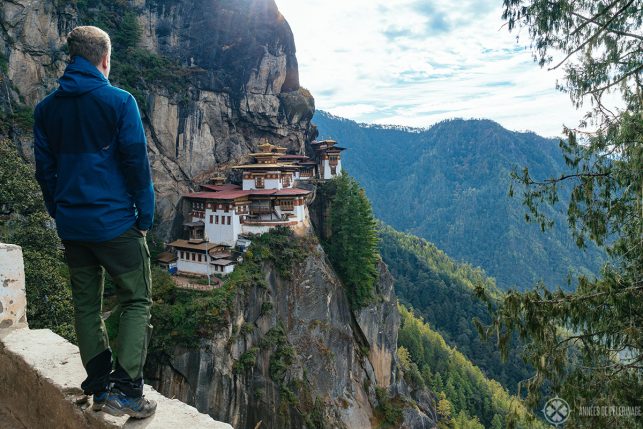
I did the hike in October 2019 as part of my journey with Amankora and I want to be honest with you: Climbing the Tiger’s Nest held many surprises in store for me – both positive and negative ones. I didn’t imagine it to be quite that beautiful and I also didn’t know the hike would be that long and strenuous, but more about that later.
Here is my full guide to hiking the Tiger’s Nest
It is perhaps quite important to mention, that the Paro Taktsang is not just a pretty place, but one deeply entrenched in the local beliefs. Most Bhutanese will visit the place at least once in their lifetime, as it marks an important event in their history: The advent of Tantric Buddhism in Bhutan.
The Legend behind Paro Taktsang
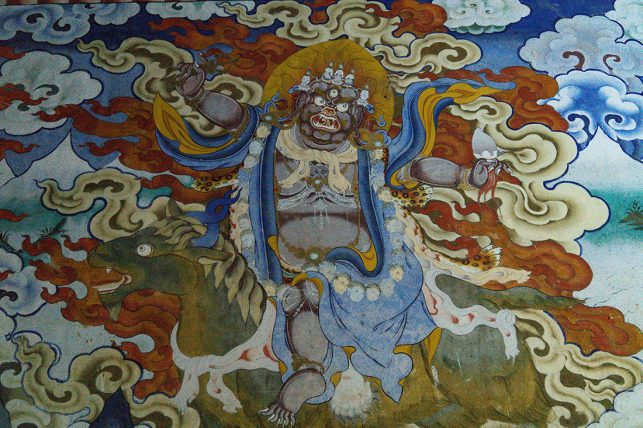
Legend holds, that Guru Rinpoche, the founder of Buddhism in Bhutan, flew from Tibet on the back of a tigress to the current location of the Tiger’s Nest. It is here Padmasambhava (how he is also known) meditated and emerged in eight incarnated forms. Because he interred the tigress in a cave in the mountain, it became known as the Tiger Nest (stag tshang, Tibetian for ‘Tigress lair’). There is a hole in the ground where you can still “see” her.
Later, in the 17the century, Tenzin Rabgye built the Taktsang monastery in the anointed place of the cave. He was said to be a manifestation of the Guru and performed a couple of miracles in the cave.
The hike to the Tiger’s Nest Monastery
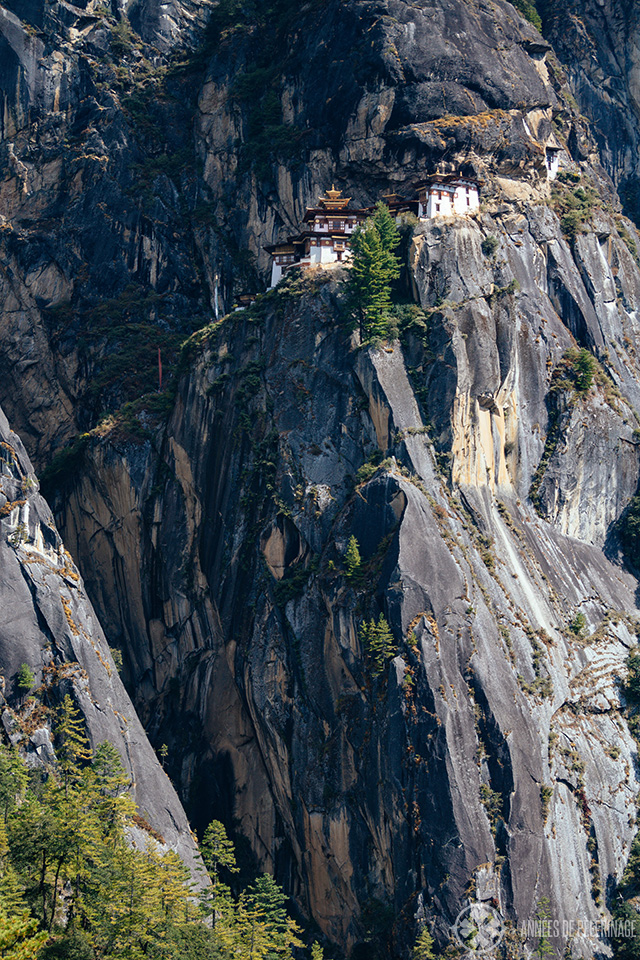
When you see the iconic picture of the Paro Taktsang, you might at first not be aware that you will have to complete a long hike to get there. I don’t know, maybe it’s just me, but these days we are sort of expecting to be dropped off in front of such major tourist attractions and then maybe walk 10 minutes at maximum. Well, the Tiger’s Nest is definitely different.
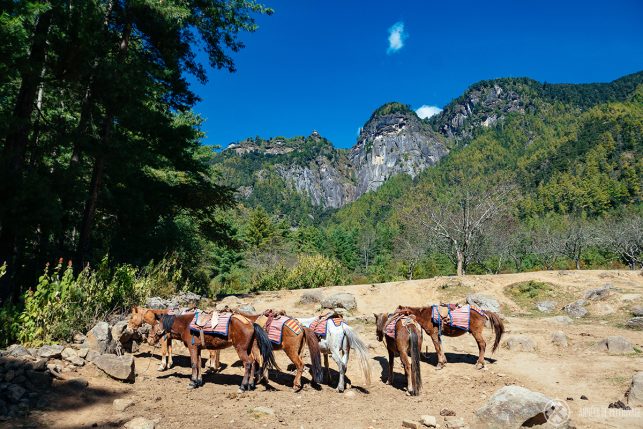
And in a way, just looking at the pictures closely, you will realize that motorized access to a monastery that is hugging a sheer cliff of 400 meters might not be that easily possible. If you are traveling with a mobility impairment, the ascent is probably not possible for you (so, definitely consult with your tour guide).
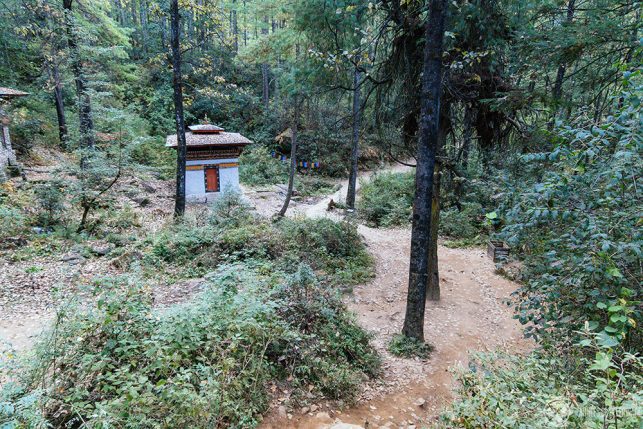
The path starts really gentle through a dense forest of firs and pines. You can actually already see the Tiger’s Nest looming on the cliff above from here, but you will quickly lose sight of it.
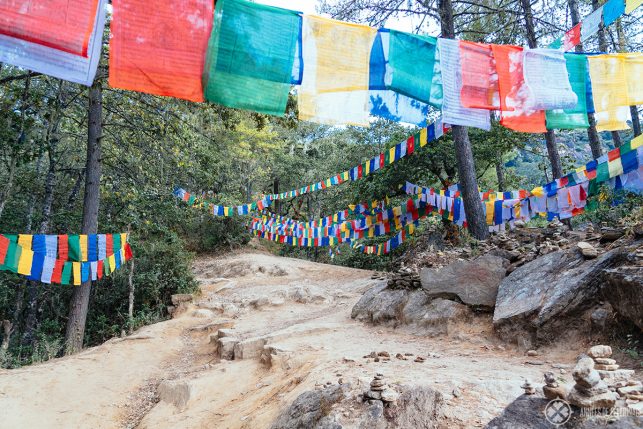
Then starts the actual ascent. Most of it is a dusty path (watch out for the horse poo) lined by trees and rhododendron. I found it to be quite easy to walk on, but the trail is somewhat steep. Most people will also quickly notice the high altitudes. For reference: You already start at an elevation of around 7,870 feet /2,400 meters, around 200 meters above the Paro valley.
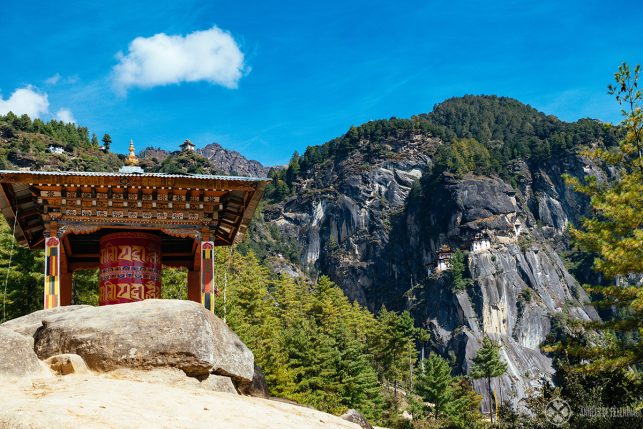
Roughly 1 hour later you will come across a wonderful prayer wheel in a little shrine. This is actually the place where your horse will drop you off, in case you rented one.
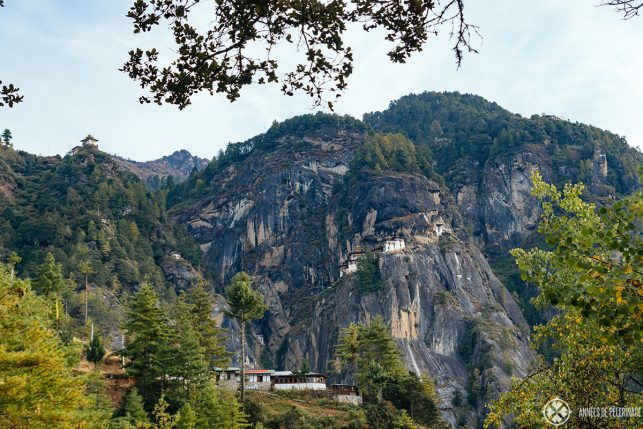
From here, it is only a short walk to the cafeteria where you will find the only restroom on the trail. As this is also the second-best viewpoint on the whole hike, you should definitely take a little break here. We brought our own snacks, so I can’t really say anything about the food, but everything looked reasonably clean.
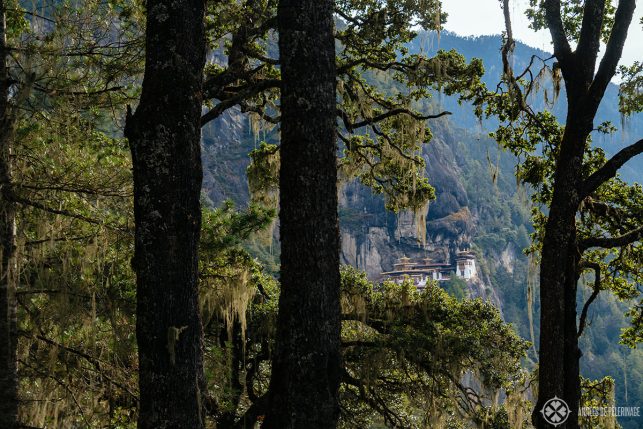
Now begins the last stretch of your hike. First, you will be walking another 20 minutes through a dense jungle where you will see the Tiger’s Nest occasionally peeking through the branches. Then things suddenly clear up and you will come to the stairs leading to the Tiger’s Nest proper. This is the scary part of the hike, at least I found it to be so.
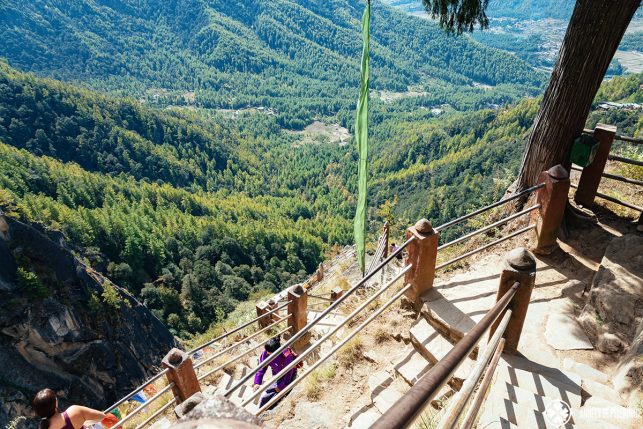
The stairs are well-maintained, but there is no denying that the cliff does drop some 400-500 meters into the abyss below. I was traveling with two people suffering from vertigo and they managed, but only barely so.
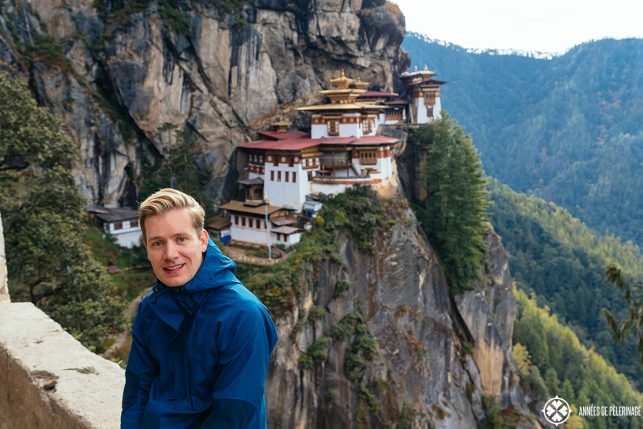
Most of the pictures of the Tiger’s Nest you see on the internet were taken from here. There is a little platform with a hut almost at the start of the stairs which is perfect for taking group pictures. Sometimes you do have to wait a bit here, but as there is a second-tier down below, I didn’t find it to be a problem.
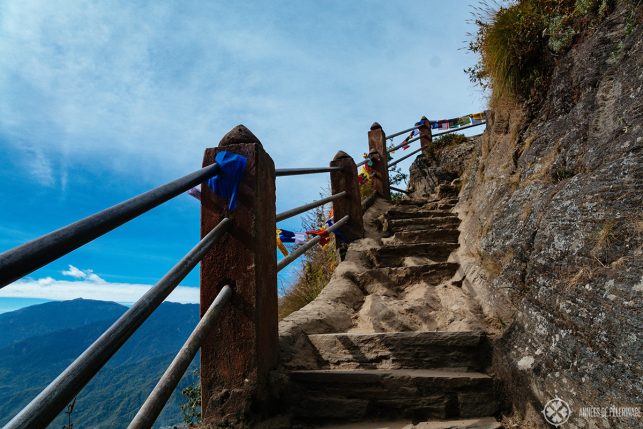
Only move onwards when you got your perfect snapshot and follow the stairs. The hike down is a bit scary like I said, but as you are constantly rewarded with views of the Taktsang, you hardly notice.
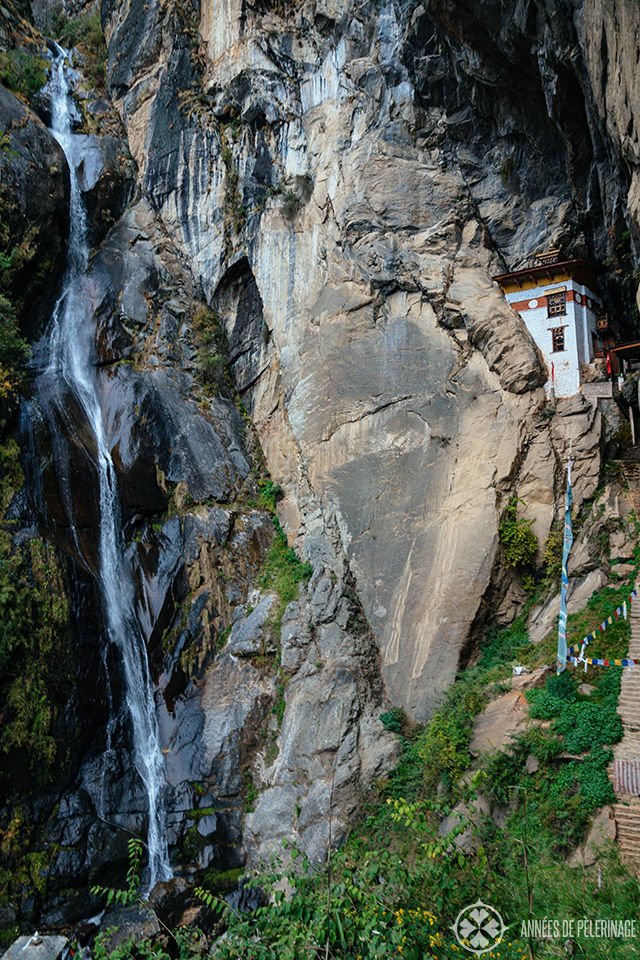
What surprised me the most was the waterfall right next to the Tiger’s Nest. I haven’t seen it on any of the pictures before, but there it is. A gigantic waterfall of 100 meters and more right next to this iconic monastery.
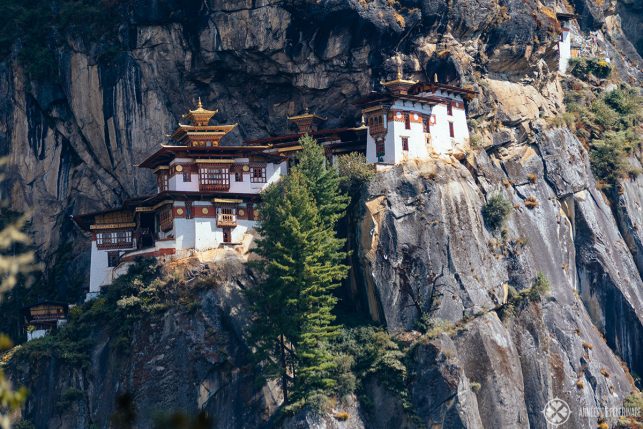
That’s about the time when you’ll also notice a couple of other outbuildings that are impressive in their own right. If you want, you can hoist your prayer flags at the bridge across the waterfall.
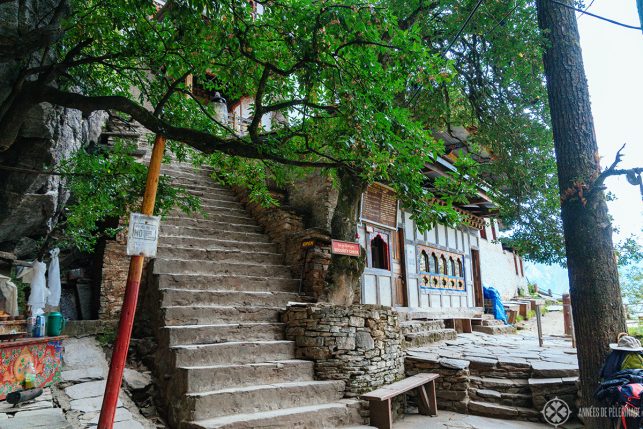
After 10 more minutes following the stairs, you will arrive at the entrance of the Tiger’s Nest. Here you will have to leave all your bags, cameras and mobile phones in a locker and pass the security check, and you are inside.
How long does it take to hike to the Tiger’s Nest?
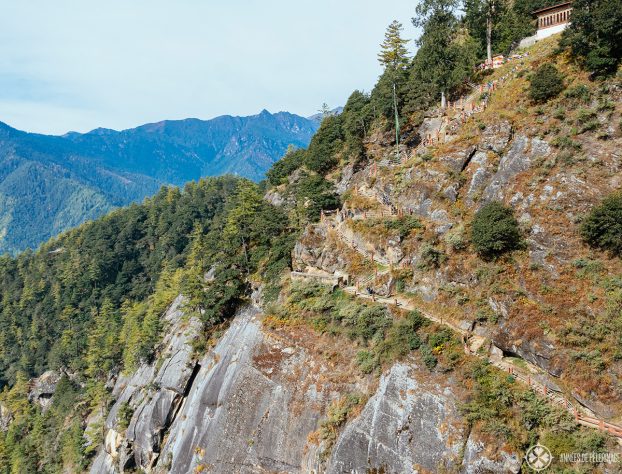
It takes roughly 2 hours to hike all the way to the top of the Tiger’s Nest for a reasonably fit person, 3 hours for people unaccustomed to hiking and the high altitudes. If you take a mule, then it will probably just take 90 minutes. The descent down to the parking lot is another 90 minutes. You will need roughly 5 hours for the full Tiger’s Nest tour.
And before you ask, there is no road, escalator or ropeway.
Tiger’s Nest Elevation:
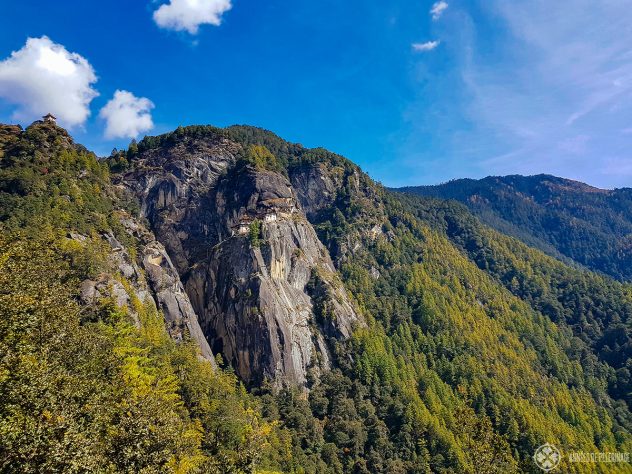
The highest point of the Tiger’s Nest is 10,233 feet / 3119 m and you will have to hike up around 2300 feet / 700 meters from the start of the trail to the actual monastery covering roughly 2 miles each way. Which is actually quite though.
Inside the Tiger’s Nest
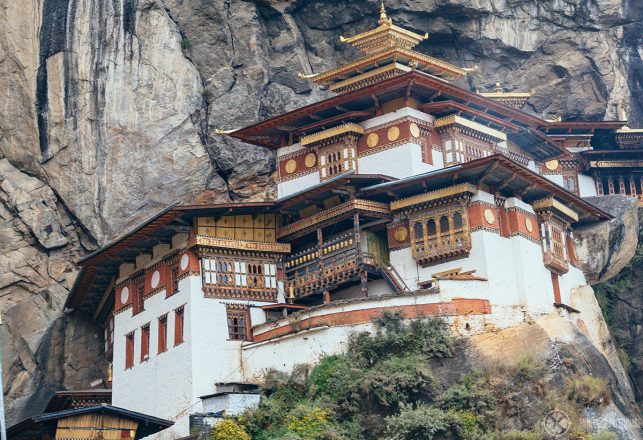
Once you cleared the security check you are ready to explore the actual monastery. As there are no pictures allowed inside, I will quickly describe what awaits you.
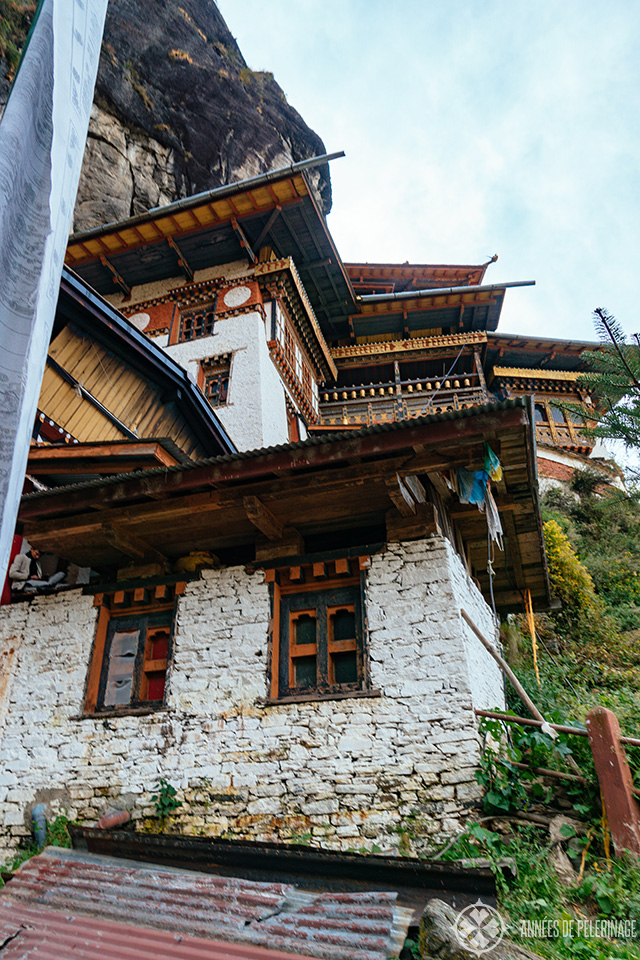
A set of huge rough stairs will lead you directly to the main sanctuary of the Tiger’s Nest. The cave where Guru Rinpoche meditated more than 1,200 years ago. The actual cave, called Pel Phuk, is hidden behind a golden door that is only opened once a year. Still, the whole room is covered with gold and intricated murals and it’s hard to escape the spiritual energy emanating from the place.
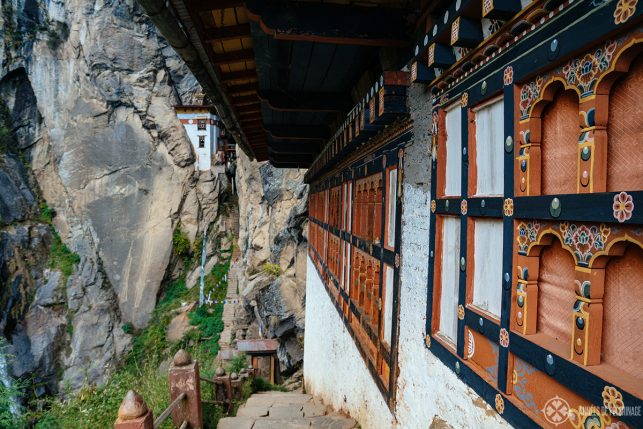
Right around the corner, you will find another sacred sight. A stone where Bhutanese people try to hit an auspicious indenture with closed eyes. You got three times and if you hit it with your thumb, then your wish will come true.
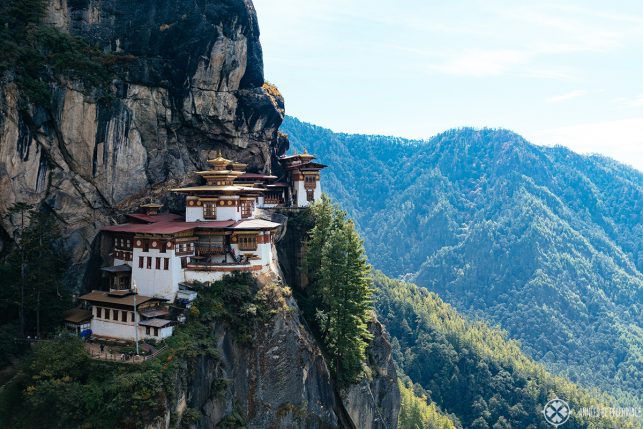
A set of wooden stairs and walkways connects the different buildings of the Paro Taktsang. There are many different prayers halls and caves inside the monastery. What you do have to know is that the main building was ravaged by fire on April 19th, 1998. Most of what you see today is a reconstruction that was finished in 2005, while the rest dates back to 1692.
Take some time to explore each hall, join in into prayer and try to be respectful at all times. This is the most important religious site in Bhutan and this is the very reason why you need to leave your cameras at the entrance.
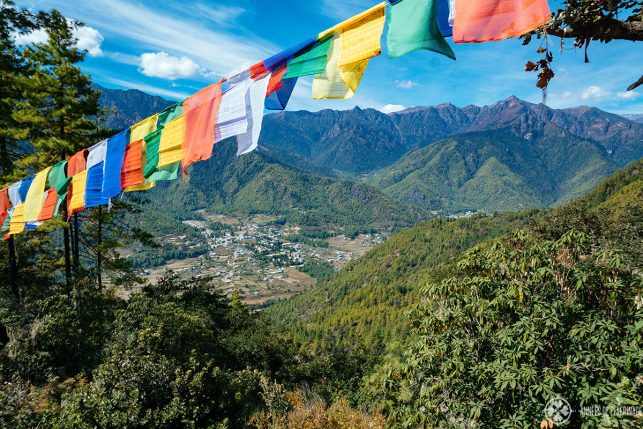
When you are ready, start your decent pack to the parking lot (but don’t forget to pick up your backpacks). There is a lively little market at the start of the trail to the Tiger’s Nest, where you can shop souvenirs and other trinkets. I’m a bit dubious about the quality of the products, but if something catches your eye, why not buy it.
A couple of practical tips
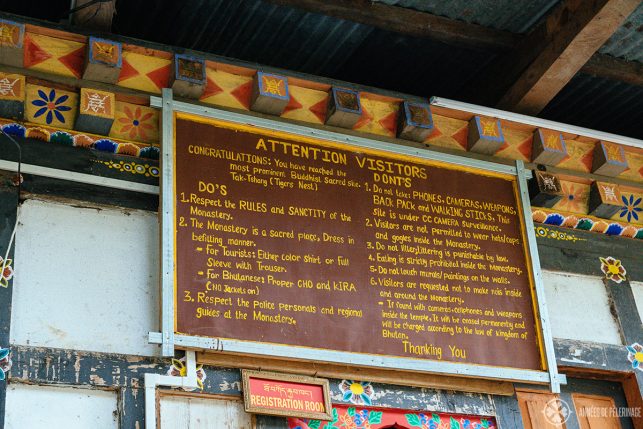
- Bring walking sticks if you are not as fit or surefooted (you have to leave them at the temple entrance, though)
- Take along enough water, even though there is a Café on the way quite close to the temple, you will need it.
- On busy days, the horses will create a lot of dust. Try taking the paths where they cannot walk. I have even seen people wearing breathing masks (though it was not nearly that much of a problem)
- Hiking shoes are not needed. The trail is well maintained. But wearing comfortable mountain-trainers is recommended.
- It can be a bit cold early in the morning, but it will quickly get very warm, so wear layers!
Best time to visit the Tiger’s Nest
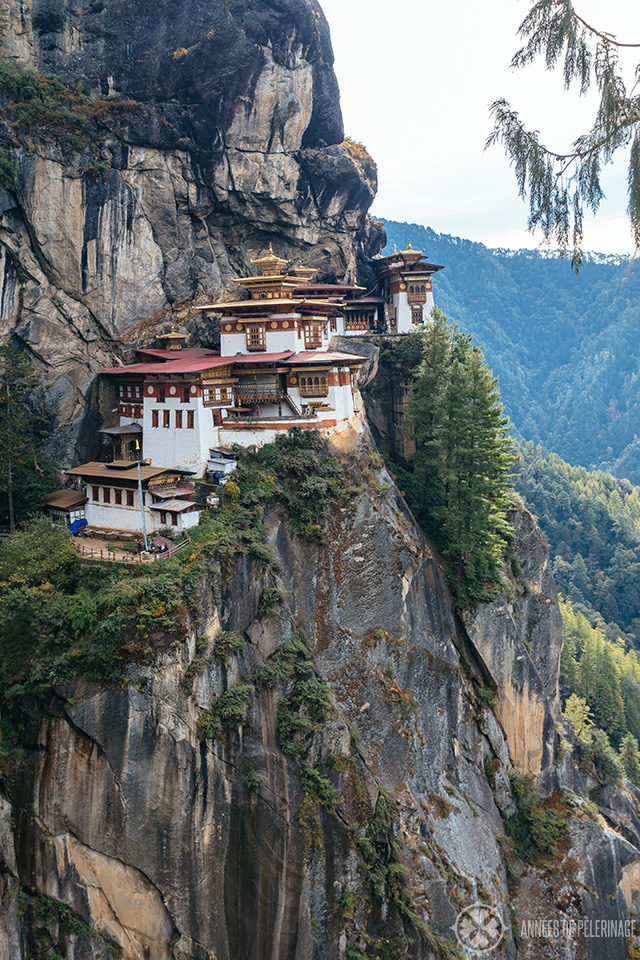
The Taktsang is a fairly crowded tourist attraction for Bhutan’s standards. As Bhutan is one of the least visited countries on this planet, this basically means there are 500 people per day and not 50 or 5 as in some other places. If you want to avoid the moderate crowds, then you have to start your hike early in the morning (like 7 am or earlier). I did this and we had the whole Tiger’s Nest to ourselves.
That being said, the morning is not the best time to take pictures of the Tiger’s Nest as the sun rises directly behind the monastery. The afternoon offers much better picture opportunities and I saw very few people starting their hike afternoon. Which means it won’t be crowded either.
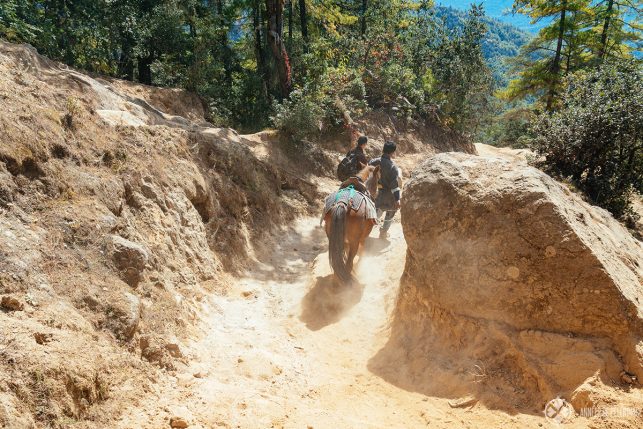
Sometimes there are a lot of horses on the paths later in the morning and things can get a bit dusty. But I actually didn’t see many tourists making use of the horses (and thank god). Other than that, I’ll refer you to my post about the best time to visit Bhutan, as the same applies here.
Note: The Paro Tsechu festival held for 5 days starting on the 10th day of the second Bhutanese lunar month might be the most auspicious day to visit. In 2020 it will be between April 4-8.
Tiger’s Nest opening hours
- morning: 8 am – 1 pm
- afternoon: 2 – 6 pm (in winter it already closes at 5 pm)
How to get to the Tiger’s Nest
This point is actually kind of moot because as of now you cannot visit Bhutan without a guide, so he or she will basically show you the way. That being said, you will reach the Taktsang monastery by driving the road from Paro to the Northwest towards Drukgyel Dzong. After about 10 kilometers, a road branches off to the right which will take you to the parking lot. It takes about 30 minutes to get the from the airport
So, this was my little guide to hiking the Tiger’s Nest in Bhutan. Hope you liked reading it. If you still got any questions about Paro Taktsang, leave a comment!



